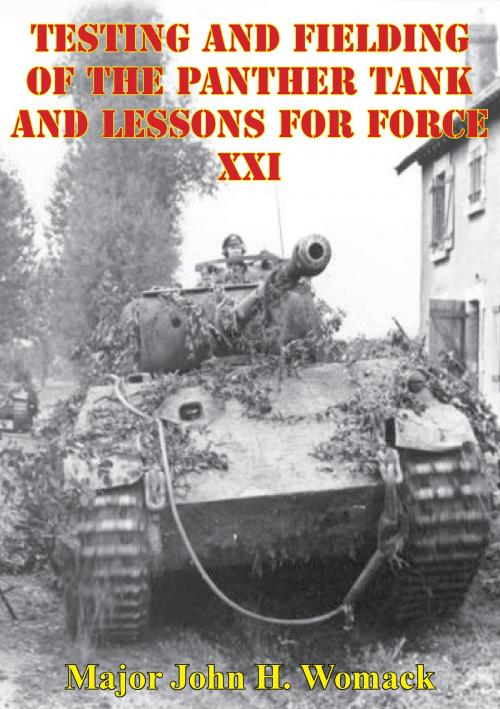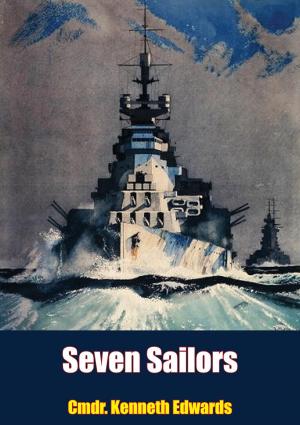Testing And Fielding Of The Panther Tank And Lessons For Force XXI
Nonfiction, History, Germany, European General, Military, United States| Author: | Major John H. Womack | ISBN: | 9781782898306 |
| Publisher: | Lucknow Books | Publication: | August 15, 2014 |
| Imprint: | Lucknow Books | Language: | English |
| Author: | Major John H. Womack |
| ISBN: | 9781782898306 |
| Publisher: | Lucknow Books |
| Publication: | August 15, 2014 |
| Imprint: | Lucknow Books |
| Language: | English |
There are several historical instances of the problems caused when equipment is rushed in production and fielded too soon. A great example of this was the German rush to field the new Panther tank before the Battle of Kursk during the Second World War. Unlike the U. S. Army today, the Germans were trying to develop, test and field a major weapon system while fighting a war. It can be argued that the Panther tank was the finest tank built during the Second World War, but it certainly did not make its appearance on the battlefield with great distinction. The study of the Panther tank shows the dangers the U. S. Army faces today as the Army tests equipment that will digitize the battlefield. The Panther clearly shows three potential pitfalls of new equipment. These pitfalls are:
•the user of the equipment must have input to the design and development,
•new tactics were not formulated to capture the advantage of the new equipment,
•logistics required for fielding the new equipment must be in place.
Each of these pitfalls caused significant problems for the Panther tank. They can cause significantly more problems for the Army as the equipment being tested and fielded today will be used largely for command and control.
Today’s U.S. Army has the potential to experience the pitfalls of the Panther. As the Army moves to digitize the battlefield it will use information technologies that it hopes will produce disproportional lethality...If we do not pay attention to the lessons learned from past fielding of equipment, and more importantly, the possible consequences of introducing equipment not yet fully tested to the field, the Army will create more problems for itself with the new technologies used in Force XXI.
There are several historical instances of the problems caused when equipment is rushed in production and fielded too soon. A great example of this was the German rush to field the new Panther tank before the Battle of Kursk during the Second World War. Unlike the U. S. Army today, the Germans were trying to develop, test and field a major weapon system while fighting a war. It can be argued that the Panther tank was the finest tank built during the Second World War, but it certainly did not make its appearance on the battlefield with great distinction. The study of the Panther tank shows the dangers the U. S. Army faces today as the Army tests equipment that will digitize the battlefield. The Panther clearly shows three potential pitfalls of new equipment. These pitfalls are:
•the user of the equipment must have input to the design and development,
•new tactics were not formulated to capture the advantage of the new equipment,
•logistics required for fielding the new equipment must be in place.
Each of these pitfalls caused significant problems for the Panther tank. They can cause significantly more problems for the Army as the equipment being tested and fielded today will be used largely for command and control.
Today’s U.S. Army has the potential to experience the pitfalls of the Panther. As the Army moves to digitize the battlefield it will use information technologies that it hopes will produce disproportional lethality...If we do not pay attention to the lessons learned from past fielding of equipment, and more importantly, the possible consequences of introducing equipment not yet fully tested to the field, the Army will create more problems for itself with the new technologies used in Force XXI.

![Cover of the book Light And Shade In War [Illustrated Edition] by Major John H. Womack](https://www.kuoky.com/images/2014/august/300x300/9781782893080-Lzb6_300x.jpg)


![Cover of the book Gun Fodder - Four Years Of War [Illustrated Edition] by Major John H. Womack](https://www.kuoky.com/images/2015/november/300x300/9781786255310-qYJa_300x.jpg)




![Cover of the book Small Unit Actions [Illustrated Edition] by Major John H. Womack](https://www.kuoky.com/images/2014/august/300x300/9781782892526-t6wt_300x.jpg)



![Cover of the book Busting The Bocage: American Combined Arms Operations In France, 6 June-31 July 1944 [Illustrated Edition] by Major John H. Womack](https://www.kuoky.com/images/2014/august/300x300/9781782893806-cqqy_300x.jpg)

![Cover of the book Sir Douglas Haig's Despatches (December 1915-April 1919) [Illustrated] by Major John H. Womack](https://www.kuoky.com/images/2012/april/300x300/9781782890829-k6SN_300x.jpg)